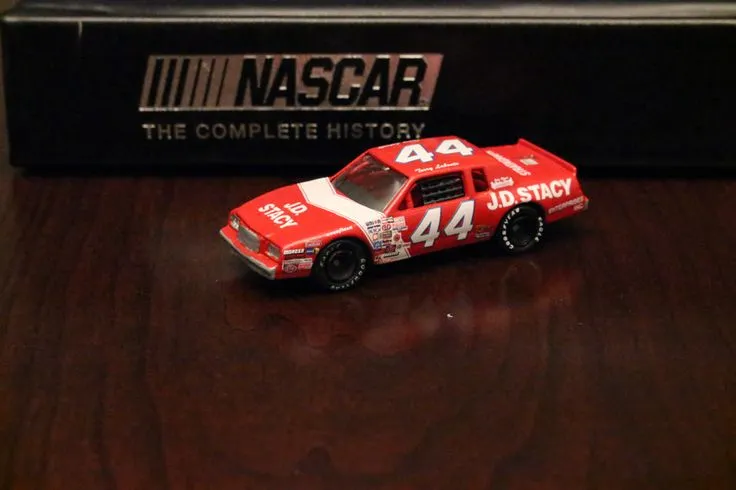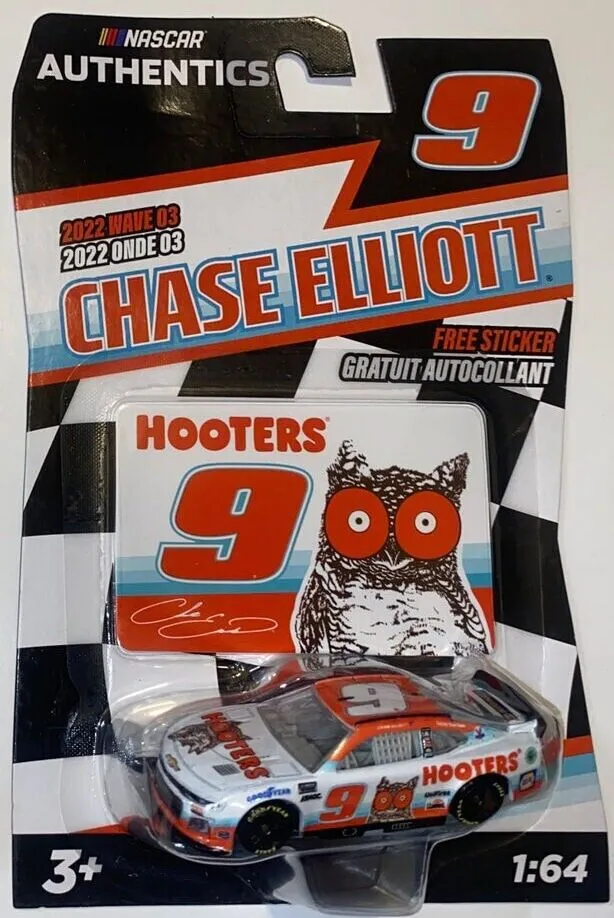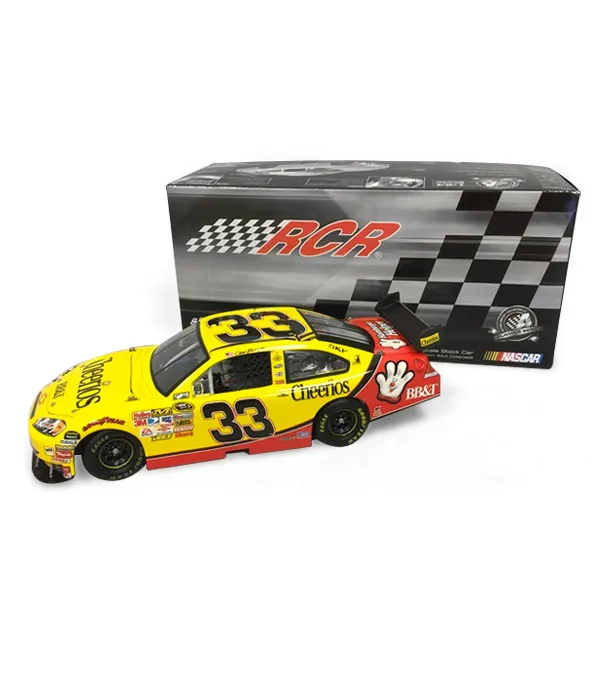The Genesis of NASCAR Diecast
The history of NASCAR diecast cars is a fascinating journey, mirroring the evolution of the sport itself. It began as a niche market, driven by a passion for racing and a desire to own miniature versions of iconic vehicles. Initially, these models were simple, often crude representations of the real cars. However, they quickly evolved, mirroring the sport’s growing popularity and the increasing sophistication of manufacturing techniques. The early diecast cars were primarily made of metal alloys, offering durability and a sense of realism. These early models paved the way for the highly detailed and sought-after collectibles we see today. This marked the beginning of a hobby that would captivate enthusiasts for generations, with each new release adding to the rich tapestry of NASCAR diecast history.
Early Diecast Models
The earliest NASCAR diecast models were a far cry from the meticulously detailed replicas available today. Often produced in limited quantities, these models were primarily aimed at children and casual fans. Manufacturers focused on capturing the basic shape and livery of the race cars, using relatively simple paint schemes and rudimentary detailing. The materials used were typically heavy metal alloys, providing a solid feel but limiting the level of intricacy. These early models, while less refined, hold significant historical value for collectors, offering a glimpse into the early days of NASCAR diecast. They represent the foundation upon which the modern hobby is built, and their rarity often translates to high prices in the collector’s market. These first models are valuable pieces of history.
Materials and Manufacturing

The evolution of NASCAR diecast models is intricately linked to advancements in materials and manufacturing processes. Early models were typically made from die-cast zinc alloys, which were durable but limited in detail. As technology progressed, manufacturers began utilizing higher-quality materials like zamak, a zinc alloy known for its ability to capture fine details. The manufacturing process itself also became more sophisticated. Injection molding techniques allowed for intricate designs, while improved paint applications and tampo printing enabled the creation of highly realistic liveries. Modern diecast cars often feature detailed interiors, accurate sponsor decals, and even functional features like opening doors and hoods. These advancements have significantly enhanced the realism and collectibility of NASCAR diecast models, making them highly sought after by enthusiasts.
The Golden Age of NASCAR Diecast
The late 1990s and early 2000s are often considered the golden age of NASCAR diecast. During this period, the sport’s popularity was at an all-time high, and the demand for diecast models surged. Manufacturers responded by producing a vast array of cars, representing a wide range of drivers, teams, and paint schemes. The quality of the models also reached new heights, with increased attention to detail, improved paint finishes, and more accurate representations of the real race cars. This era saw the rise of several prominent diecast manufacturers, each vying for a share of the rapidly expanding market. The golden age of NASCAR diecast is characterized by its abundance of models, high quality, and strong collector interest, making it a defining period in the history of this hobby.
Iconic Car Manufacturers
Several manufacturers played a pivotal role in shaping the NASCAR diecast market. Companies like Action Performance Collectibles and Racing Champions were at the forefront, producing a wide variety of models that captured the essence of the sport. Action Performance, in particular, became known for its high-quality models and extensive licensing agreements, securing the rights to produce cars for many of the sport’s top drivers and teams. Racing Champions, on the other hand, offered more affordable options, making diecast collecting accessible to a wider audience. These manufacturers, along with others, created a competitive market, driving innovation and improving the quality of NASCAR diecast models. Their contributions are evident in the legacy of detailed, collectible cars that enthusiasts cherish today. These companies were key to the sport’s popularity.
Special Edition Releases

Special edition releases have always been a significant part of the NASCAR diecast collecting experience. These limited-edition models often commemorate specific events, such as race wins, championships, or milestones in a driver’s career. They may feature unique paint schemes, special markings, or even come with individual serial numbers. The allure of these special editions lies in their rarity and collectibility. Collectors actively seek them out, knowing they are likely to appreciate in value over time. Manufacturers often collaborate with drivers and teams to create these exclusive models, further enhancing their appeal. The popularity of special edition releases underscores the passion and dedication of NASCAR diecast collectors. These cars are valuable collectibles.
The Rise of Collectibility
The collectibility of NASCAR diecast cars has grown substantially over the years, fueled by the sport’s popularity and the increasing sophistication of the models. The focus has shifted from simply owning miniature cars to actively seeking out rare and valuable pieces. Collectors often specialize in certain drivers, teams, or eras, building comprehensive collections that reflect their passion for the sport. Online forums, auction sites, and collector communities have played a key role in facilitating the buying, selling, and trading of diecast models. The rise of collectibility has also led to a greater emphasis on the condition and originality of the models, with collectors meticulously grading and preserving their prized possessions. This trend has transformed NASCAR diecast from a hobby into a thriving market.
Factors Influencing Value
Several factors influence the value of NASCAR diecast cars. Rarity is perhaps the most significant, with limited-edition models and those produced in small quantities commanding higher prices. The popularity of the driver and team also plays a crucial role; cars representing well-known and successful figures are generally more valuable. Condition is another critical factor, with models in pristine condition fetching significantly more than those with damage or wear. Authenticity, including original packaging and documentation, adds to a car’s value. Market trends and collector demand also impact prices, with certain models experiencing periods of heightened interest and appreciation. Understanding these factors is essential for anyone looking to collect, buy, or sell NASCAR diecast cars, making informed decisions that can maximize their investment.
Condition and Grading

The condition of a NASCAR diecast car is paramount to its value and appeal to collectors. Grading systems have been developed to assess the condition of these models, providing a standardized way to evaluate their quality. Common grading terms include Mint (M), Near Mint (NM), Excellent (EX), and Good (G), each representing a different level of wear and tear. Collectors meticulously examine the models for any imperfections, such as paint chips, scratches, or missing parts. Original packaging, including the box and any inserts, is also carefully assessed, as it contributes to the overall condition. The grading process helps collectors make informed decisions, ensuring they understand the quality and value of the diecast cars they are acquiring. Proper storage and preservation are crucial to maintaining the condition of these collectibles. This is essential to evaluate the cars.
Diecast Cars Today
NASCAR diecast cars continue to evolve, adapting to changes in the sport and the collecting landscape. While the golden age may be behind us, the hobby remains vibrant. Modern diecast models benefit from advancements in manufacturing, with increased detail and realism. The market has also become more diverse, with models catering to different budgets and collector preferences. Manufacturers are now focusing on creating premium models, offering higher levels of detail and exclusivity. The rise of online platforms and social media has made it easier for collectors to connect, share information, and trade their diecast cars. The future of NASCAR diecast is likely to see further innovation, with new technologies and collector trends shaping the hobby. Today, these cars remain valuable.
Modern Trends
Several trends are shaping the modern NASCAR diecast market. There is a growing emphasis on premium models, with manufacturers producing highly detailed replicas featuring intricate designs and high-quality materials. Limited-edition releases continue to be popular, appealing to collectors seeking rare and exclusive items. Online sales and e-commerce platforms have become dominant, providing collectors with greater access to a wider selection of models. The use of social media and online forums allows collectors to connect, share information, and discuss their passion for diecast cars. Sustainability is also a growing consideration, with some manufacturers exploring the use of eco-friendly materials and packaging. These trends reflect the evolving nature of the hobby, with a focus on quality, exclusivity, and digital engagement. These cars are always changing.
Where to Find Diecast Cars

Finding NASCAR diecast cars can be an enjoyable part of the collecting experience. Several avenues are available for acquiring these miniature race cars. Online marketplaces like eBay and specialized diecast websites offer a vast selection of models, both new and used. Local hobby shops and collectibles stores often carry a range of NASCAR diecast cars, providing collectors with an opportunity to browse and inspect the models in person. NASCAR events and race tracks are another excellent source, with vendors selling diecast cars at the trackside. Collector conventions and swap meets are ideal for discovering rare and hard-to-find models, as well as connecting with other enthusiasts. Building relationships with dealers and collectors is a valuable strategy for accessing a wider variety of models. Finding the right cars can be fun.
